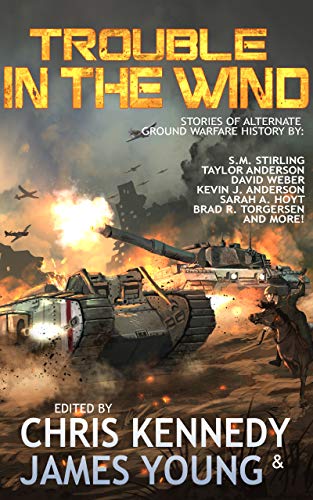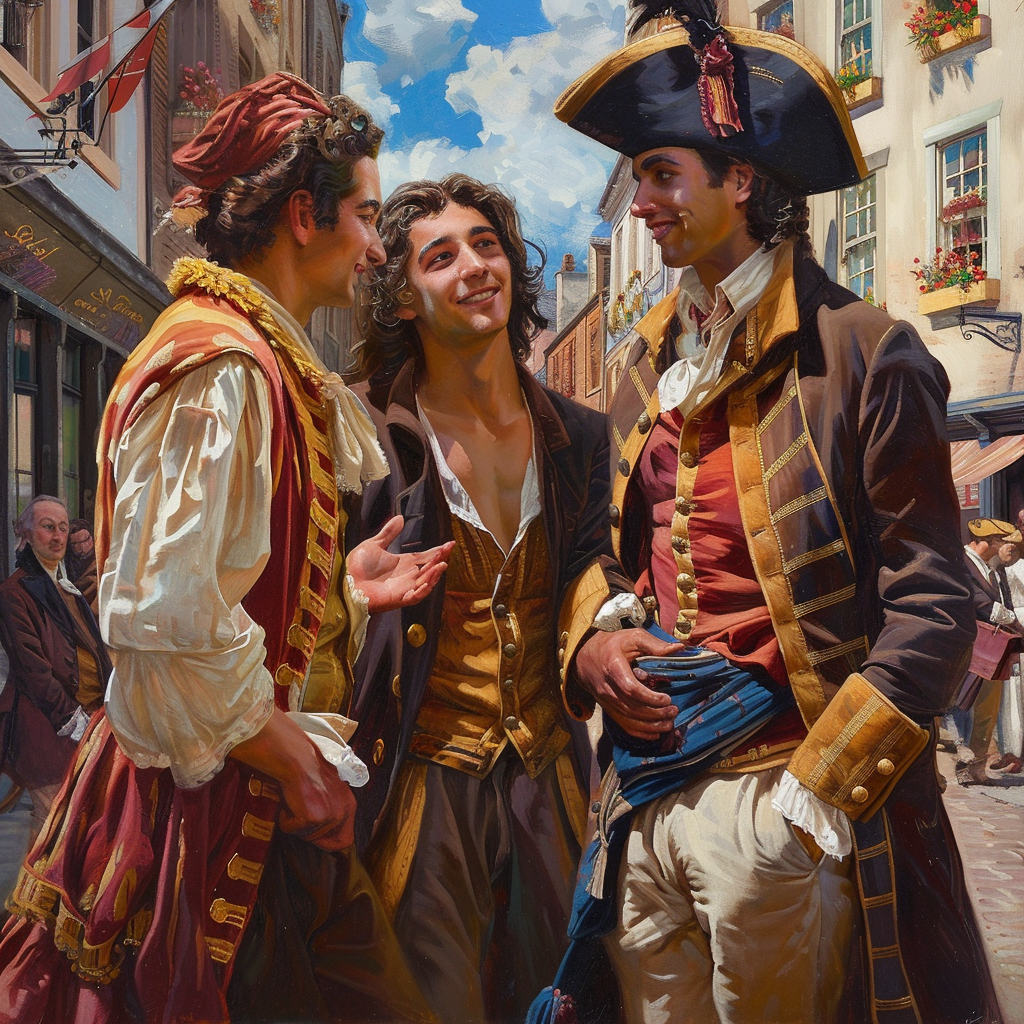When people ask “Are you a pantser or a plotter”, they often speak of pantsing as though it was a very linear thing – that you start with a beginning and write through to the end, accreting story and meandering around until you somehow end up with a plot in retrospect.
This is not the only way to pants. In fact, following a plot from beginning to end isn’t the only way to do it, either. As Kipling wrote, “There are nine and sixty ways of constructing tribal lays, and every single one is right!” (In the Neolithic Age)
So let’s look at ways of breaking linear writing. First, when it comes to writing the initial draft:
Lois Bujold once wrote that she’s started Warrior’s Apprentice with a single image in her head – and it wasn’t one at the beginning or the end of the story. “So while the book was written, largely, from beginning to end (a method I’d learned to prefer while writing Shards). it was generated from the inside out. I’ve described my usual process as scrambling from peak to peak of inspiration through foggy valleys of despised logic. Inspiration is better – when you can get it.”*
Jim Curtis writes scenes with his characters – and sometimes it’s a scene for three books down the line from his current WIP. By the time I see his WIP to beta read, it’s usually in chronological and story order – but I know it doesn’t always start that way.
My Darling Man is usually a plotter, and writes much in a more linear fashion – usually – but on the westerns, I know he’s skipped sections until he’s been able to get a book in with the bit of research he was looking for (right down to… not only who was in command of a particular fort, but when he left and who was in charge on that day.) And then he can go back and write that missing section. Other times, when he’s feeling the slog, he’ll skip forward and write one of the scenes that’s really exciting and interesting and shiny… Rachel Aaron calls them the “candy bar scenes”. Then he has to figure out how to get from here to there.
Does it change from book to book, series to series, or do you write the same way every time? Is it linear or not?
Second, there’s the editing… some people do this beginning to end, every pass, while others skip back and forth (especially when it comes to working in foreshadowing for later events). What do you do?**
*Sidelines: Talks and Essays by Lois McMaster Bujold
**Whichever you do, would you hit the share button below, so we might get a wider pool of responses? ‘Cause I can tap four writers with promises to feed them, but I’m interested in the writers at large on the internet. Since those of us locally are all so different in our styles and approach…





24 responses to “Breaking Linear”
I tend to work best if I have a start and an end image for the story. Starting image easy, end… not so much. But if I have those, I can get from point A to B. In between, I often try to rough-sketch events I know I want to have happen, but for the grind of writing itself I try to use the three-scenes rule: work out what’s roughly going to happen in the next 3 scenes and write from there.
A lot depends on how much stress I’m under. On bad days I don’t try to write things straight out, I don’t have the concentration for it. Instead I try to script what’s going on, who’s saying what, etc. With luck that lets me turn it into written prose on the next stab at it.
As for editing, I leave a rough draft alone for at least a month, then go after it. First editing pass I try to get “anything that sticks out” – typos, turns of phrase, a scene that’s not quite in the right order, any bits that got left as “and then X happens” in the rough. Second editing pass I go deeper. I generally end up doing 4-6 passes overall, with the last 1 or 2 usually being more typos and “how the words look on the page”.
I can start with an image but starting with the end and the beginning can be difficult especially if I know there has to be stuff in there. . . .
The villain at the end is immensely secretive. the middle part is his trying to murder the character by proxy and the character figuring it out. But details of that aren’t clear.
Sometimes just writing down random images you want in the story helps?
Yeah, but they’ve got to point the right way — but not too obviously,
*Nod* Another odd trick I use is to go poke a Science Daily site or one like it – sometimes the scientific oddities jar the plotting brain loose.
I’ve tried a few different ways of approaching my stories. My first book was more strictly plotted out and written in a completely linear fashion. For the second book I wrote whatever scene struck my fancy on a given day and then shuffled them around to get them into the semblance of a well-constructed story. That turned out to be a much too free wheeling method for me. Drove me nuts and required too much rewriting and fiddling to get everything to work. My third book I went back to a more traditional method, however I allowed myself to add some “inspired” bits throughout instead of crushing them to dust because they weren’t part of my original outline. This fourth book is going much the same, though as I near the end I find I’m loosening up quite a bit and allowing myself more freedom in exploring “what-ifs”. I won’t have a final determination of whether that’s a good thing or a very bad thing until I type “The End”. So far, though, I’m liking whats showing up on the virtual paper.
I think my method is similar to yours. I have a pretty detailed outline, and I try to write it out in order; the one time I didn’t, the scene that I eventually had to go back and put in just never felt quite right to me (whether it actually works or not, I don’t know; the book has just now gone to beta readers). Writing non-linearly actually feels more restrictive to me than writing linearly does, because I know that I have to make all these scenes fit together whether they naturally flow from one another or not.
One thing I do try to keep in mind, however, is that my outline is a map, not a contract. If something I intended to be an entire chapter turns out to be boring, I can mostly skip through it and get to a later point. And if I want to take a detour to look at something shiny, I can do that; my map lets me know how to get to my destination, and I can always look at it to find my way back from the sidetrack.
“A map, not a contract.” Precisely!
I don’t like setting out without having constructed that map, but that doesn’t mean I feel honor-bound to follow it in every detail. I think of it as one way to get where I’m going, not necessarily the best way; along the way, unexpected events and surprises in the local terrain bring about detours and shortcuts.
Yes! Bujold says that one should always feel free to have a better idea. I’m with you: I like to have an outline (I feel a lot more comfortable that way), but I don’t feel bound by it.
So far, I’ve always ended up close to where I imagined the story would go, but I often add new arcs to how I get there.
My outline is going through the misty forest blazing the trees where I want the path to go.
Generally there are a few divergences to take in sights. Sometimes there are others because the ground did not prove stable underfoot.
I’m ambling through the forest more or less aimlessly and try to incorporate as many of those trees into the story. Unstable ground is just another bit of fun. 😀
Textbook variant of an out of order pantser here. But I know there is a story – actually, several doorstoppers worth of story – in that mess of scenes I got. Some things start to fall into place.
Reblogged this on Lee Dunning and commented:
Every writer approaches their stories differently, and not always the same from book to book. I know my methods have evolved (or devolved?) over the course of the Exile series. Which, by the way, is going along swimmingly. The end is actually in sight and the words are flowing at a rate of 2,000 – 3,000 words a day (I write three days a week). I’m thinking the first draft will be done by the end of March. Fingers crossed.
The current book I’m writing started at the beginning – but it’s being written a lot like doing cross stitching. I write a scene, then write the next, only to realize what I needed to add to the first. then I write the next scene, only to find it was the fourth and I need to go back and write the actual third…
This means when my husband asks if I have more for him to beta read, I may have several thousand more words, but they’re still out of order, and the more I write, the more I’m going back in and fleshing out world-building, motivations, and background stuff (including foreshadowing), and feeling out the shape of the holes of the scenes that need written (some of which I wasn’t aware were missing until I got further on, and referenced something I hadn’t known it happened and needed writing.)
It’s quite frustrating, and very different from how I usually write. I hope it’ll be a good book when I’m finished.
I do a lot of that going back and putting in support structures.
Then, I never allow beta readers until it’s as good as I can get it — or at least, I’m aware of problems I can’t diagnose that are higher level than those I can fix. (Getting your typos is not important if you have to rewrite two-thirds of it, accidentally replacing all your typos.)
This one is demanding betas, because I keep going “I am totally out of what happens next…” and when I hand it to trusted betas, they say “well, so, after this and that and that, or you going to do thing or other thing?”
And I hadn’t even seen that and that coming, much less thing or other thing… but as I start writing, I realize it’s likely to be that and something else, leading to completely different thing….
And then I get blocked 3 steps down the road, but that’s 3 more than I had before. So, back to beta in wash-rinse-repeat cycle.
I drove my professor mad when I could not give him those ‘the outline and the introduction’ because I had neither. I started in the middle, wrote the introduction two thirds in, and the outline I added on after the whole thing was finished. Got an A nevertheless. 😛
Argh, the ‘delete’ ate an entire line: Repost
I drove my professor mad when I could not give him ‘the outline and the introduction’ of the MA thesis I was wroking on, because I had neither. I started in the middle, wrote the introduction two thirds in, and the outline I added on after the whole thing was finished. Got an A nevertheless. 😛
I’m more of a pantser. I have a loose idea of the story but I see it as a series of scenes. I mentally write those scenes long before I put fingers to keys. I should write some of those disassociated scenes down…but if it’s not for my WIP, I forget.
It depends on what source my Muse coughs up [Sorry. Hairballs are on my mind at the moment. *Eyes Athena T. Cat*] If it is a story that leans on historical events, then I write from start to finish in order to keep the sequence correct. If it is a character-driven story, then I might start it, jump to something that I know needs to happen at some point, go back to the main thread and write, and jump elsewhere if I need a mental candy bar. Recently I’ve been having scenes from later Familiars books ambushing me, so I write them, then go back to what I’m “supposed” to be doing.
Setting driven/milieu stories? Whunf. I start with people in the place, or going to the place, describe the milieu and see what transpires, and what the milieu needs to have explained or fleshed out for readers.
I generally start out pantsing, but with an end point in mind (and occasionally written). I skip scenes if I’m not in the right mindset to do it justice, go back and add details to previous scenes, stop and organize and get back on track, sometimes outline what I’ve written and what needs to come after, and . . . other chaotic and weird things, like pulling out whole threads to be their own separate story. Flip a coin to decide who dunnit when I have a mystery and whatever.
It’s not pretty, over here, just now . . . I _think_ I’m writing three stories at once. Might be four. I think I’ve at least pinned down the sequence they happen in.
I generally start by wondering what so-and-so character is doing today, so I go “visit” them in the theater of the mind to see. Then something interesting happens, or someone interesting wanders in.
Current WIP started with Alice going to the cafe and meeting Kali the Destroyer there. Kali is on holiday from the destroying business, hanging out on Vacation Planet Monkey.
My job is to watch the story unfold and write it down. Sometimes everyone cooperates and it goes as fast as I can type or faster. Other times they don’t want to do anything and I have to wait.
I’m sure this is one of the worst possible ways to write a story, but it is what I do.
I jot a lot of random scenes while outlining. The outline has to be linear, though — though I often go back and insert stuff — or I can’t trust it to actually go through the story. Many half-finished stories taught me to never trust a story to finish.
Shared.
Thank you!